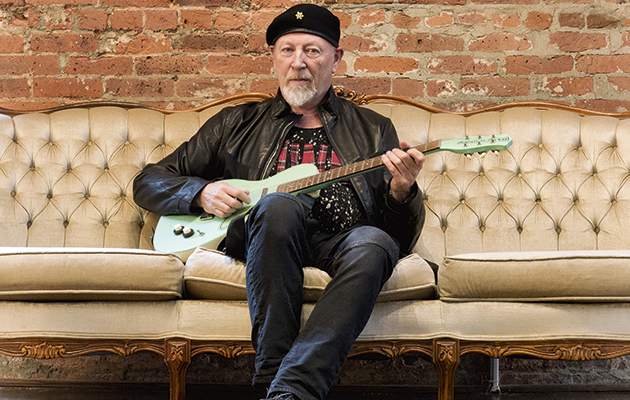Originally published in Uncut's October 2018 issue To Hampstead, then, where RICHARD THOMPSON takes Tom Pinnock on a tour of his old haunts. Between stop-offs at former homes, favoured eateries and long-lost pubs, the visionary singer and guitarist reflects on his transcendent new album, 50 years o...
You worked with Joe Boyd again in the early ’80s after a long gap. Were things very different from those early Fairport albums?
Joe approached me for Shoot Out The Lights. I’d just recorded with Gerry Rafferty as producer, which was a bit of a disaster. Gerry loved to multi-track everything, which for his music works great, but we hated it for ours. Gerry was very difficult to work with – he’d come in the studio with a pint of what I thought was apple juice, but it was actually whisky. We wouldn’t allow him to release the record or shop it, but five or six of the songs ended up on Shoot Out The Lights. Joe suggested we go into Sound Techniques, make it quickly and cheaply and put it out on his label. That was also the end of mine and Linda’s relationship, so it was a bittersweet time. The album did OK in America, yeah, but unfortunately the publicity was all about us splitting up – yes, we got in Time magazine, but it was all “Oh, the record’s telling this story…”. Which it never was at all. I love Joe, he’s such a great musical human being, and he wrote the best book on the ’60s. He might have been the only person in Britain who had the ears and the musical background to allow Fairport to be ourselves.
Working with Mitchell Froom in the ’90s must have been very different.
Fairport were considered very unfashionable in the ’70s, and it didn’t really change too much in the ’80s. I suppose I escaped to America, where I was treated like a new alternative act, which was quite fun. I was there with REM and 10,000 Maniacs and Talking Heads, so that was OK. Joe had a naturalistic attitude to recording, but working with Mitchell involved tweaking something natural to make it sound a bit funkier, almost like it’s recorded badly. But ‘bad’ in this instance equals ‘attitude’. It was a lot of fun. The budgets were larger, and because of the ways corporations work you’re expected to spend the budget. I still owe EMI a fortune, I’ll never recoup!
13 Rivers might be closest to Mock Tudor, in many ways. That must have been a happy period for you?
I like Mock Tudor a lot, it’s a good sounding record. Again, that was a lucky record. A great studio, Capitol B. The Be-Bop-A-Lula Room, as they call it. I just did a chamber orchestra soundtrack there for a film called The Cold Blue. It’s made up of footage shot by William Wyler, the Hollywood director, about the Memphis Belle, the B-17F bomber.
You must have a lot of touring coming up.
I have three different tours of the States in November, December and January. They’re bus tours – I love them, it’s the best. The camaraderie of the road… It’s just the three of us, yeah, plus our crew of 72. Hair, makeup, costume, choreographer. One costume change per song. In October I’m back here.
So you’ll be spending a fair bit of time in Hampstead, then?
I want to spend more time in London, basically. I’m feeling the old pull. It’s a civilised place to live. I love the galleries, the LSO… I never get to spend enough time here, so I really want to change that. One tends to gravitate to what one knows. Now, are we going to pay or just do a runner?



